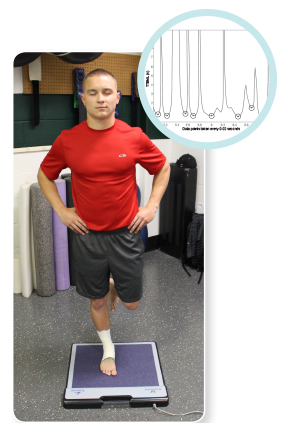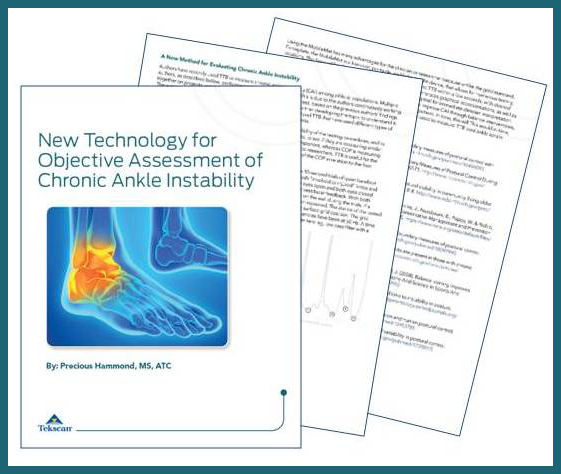
Assess & Manage Chronic Ankle Instability
An estimated 45% of all sports injuries involve the ankle. Of those with ankle sprains, about 1 out of 3 people report residual symptoms that classify as chronic ankle instability (CAI).
CAI is a common musculoskeletal injury typically attributed to deficits in single limb balance. Historically, clinicians and researchers have conducted balance assessments based on center of pressure displacement measurements, however more recently, time-to-boundary (TTB) has been utilized because of its ability to discriminate postural control deficits present in subjects with CAI.
Time-to-Boundary is a validated, reliable, spatiotemporal (range and velocity) measurement tool that estimates the time an individual has to make postural corrections in order to maintain balance. Download this free whitepaper to learn more about TTB and how you can use it to objectively assess and manage chronic ankle instability.
Download this whitepaper to explore:
- The relationship between chronic ankle instability and time-to-boundary
- The differences between TTB and Limits of Stability (LOS)
- How TTB can be used to measure and evaluate CAI
- A new, mobile system that provides objective and quantitative data to assess stability
-
TTB research studies performed to:
- Determine good intersession reliability of TTB for single limb balance
- Examine correlations between TTB and traditional center of pressure (COP) measurements in subjects with CAI
- Show TTB to be sensitive to detecting improvements in SL balance post CAI interventions
- And more!
